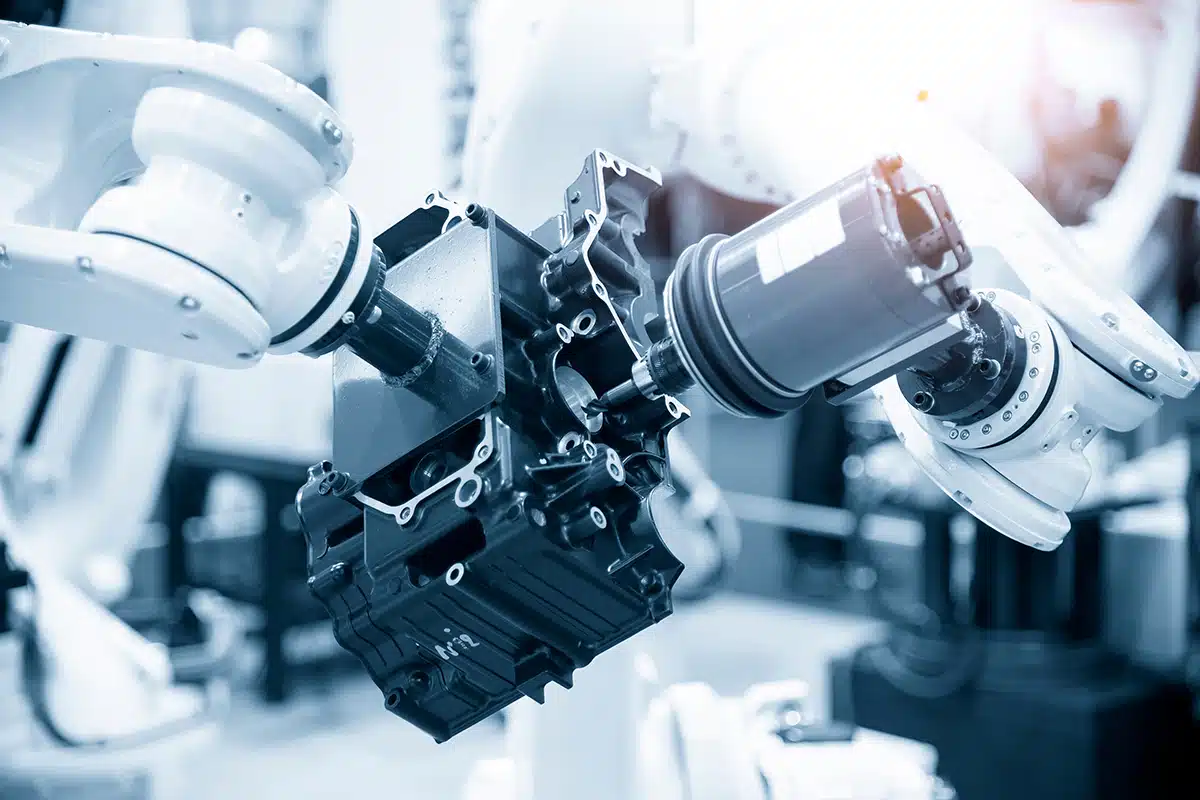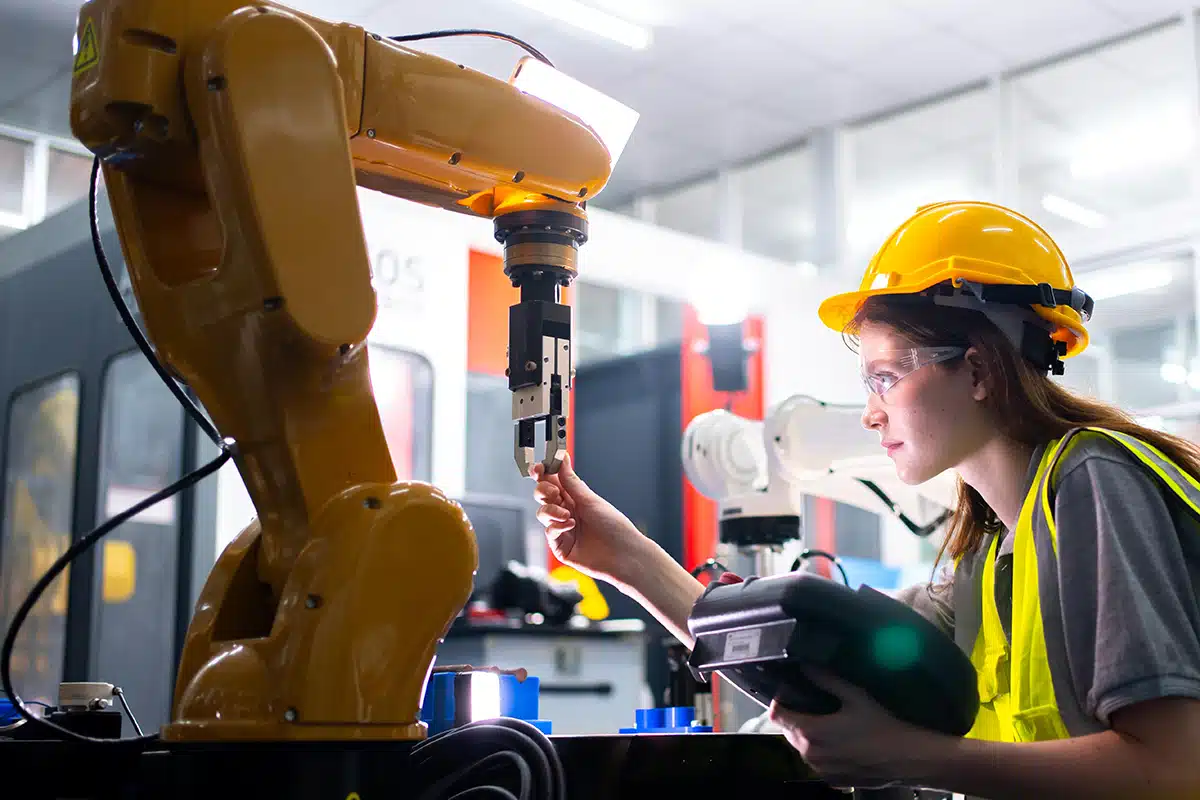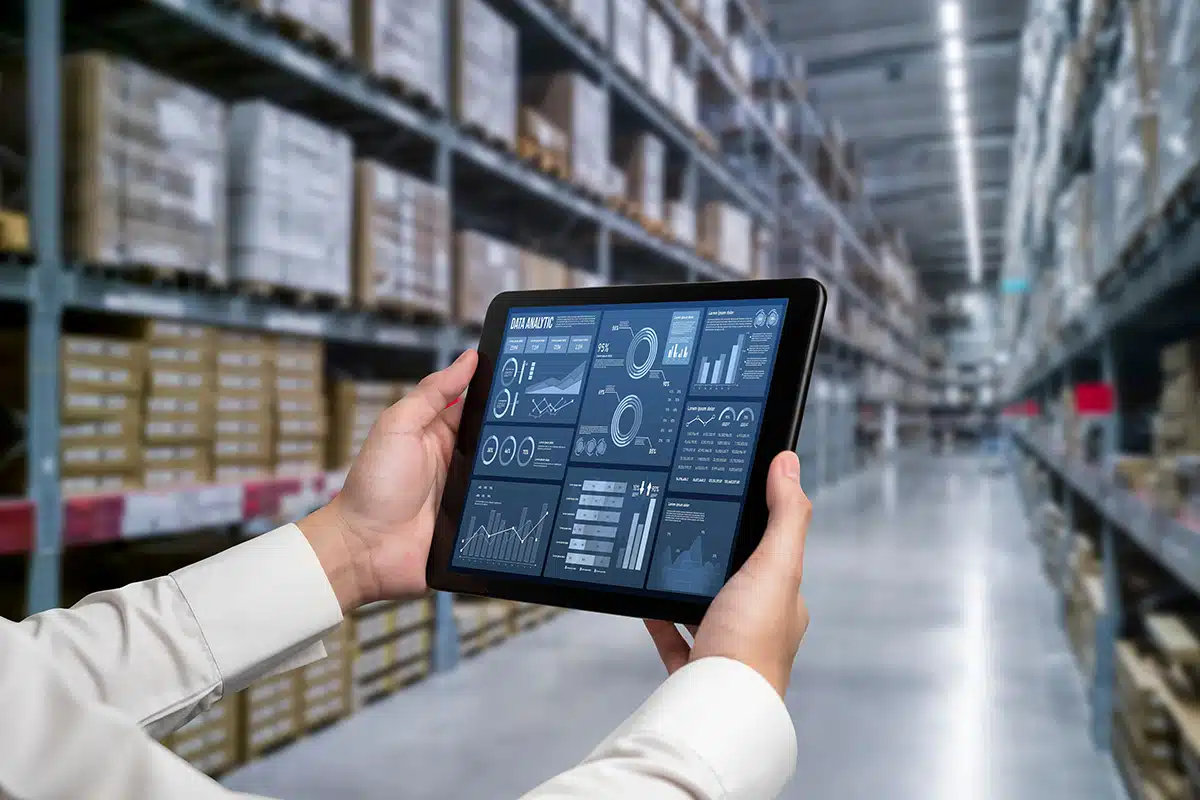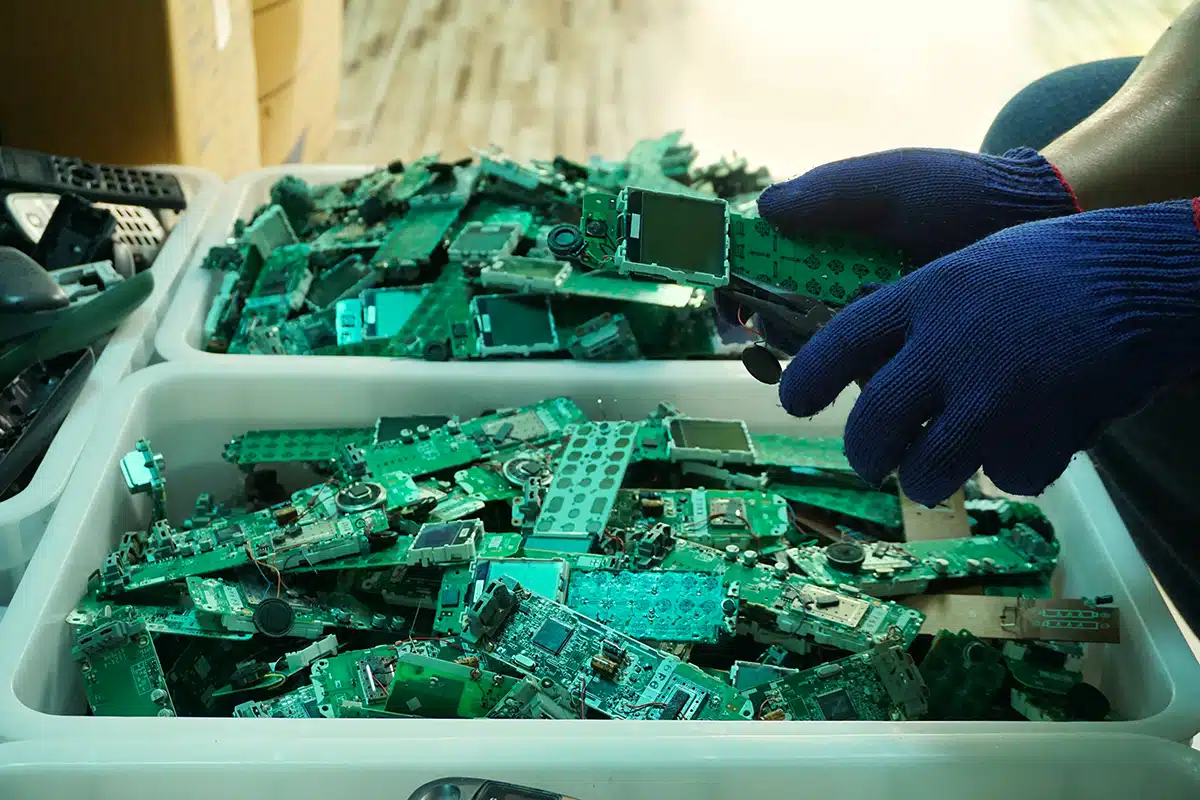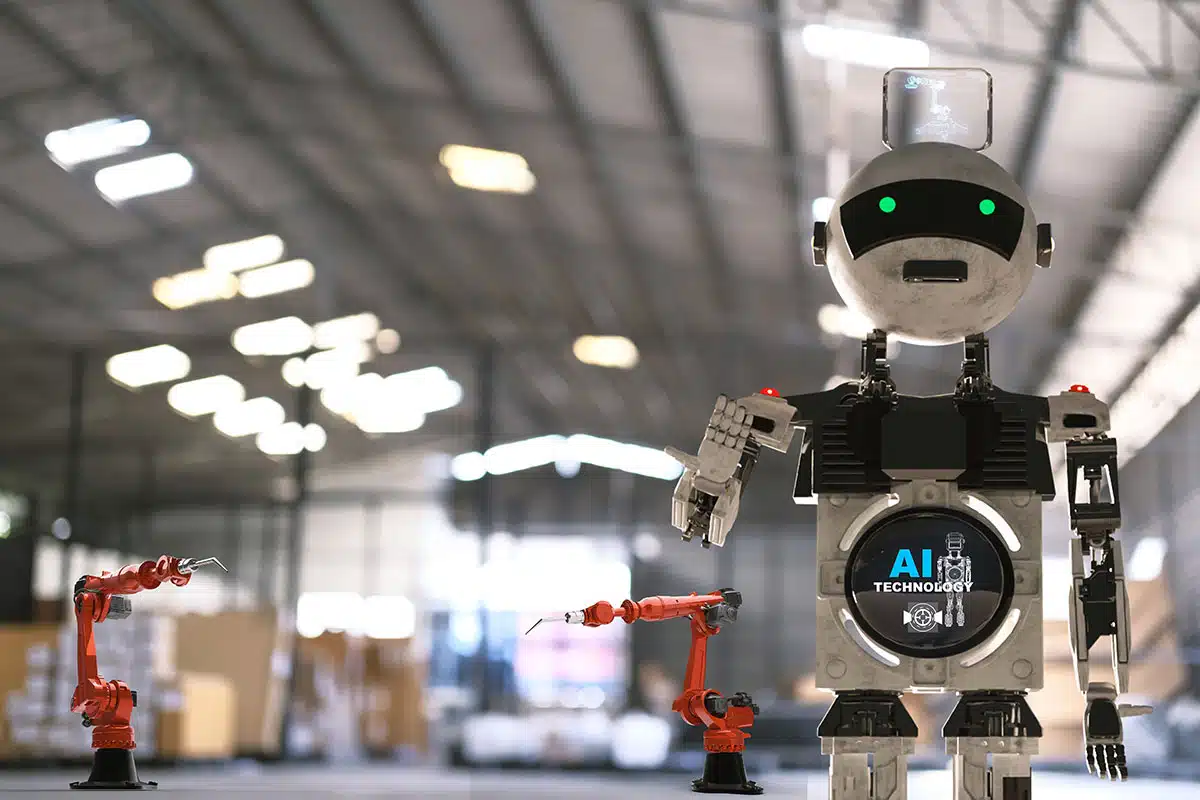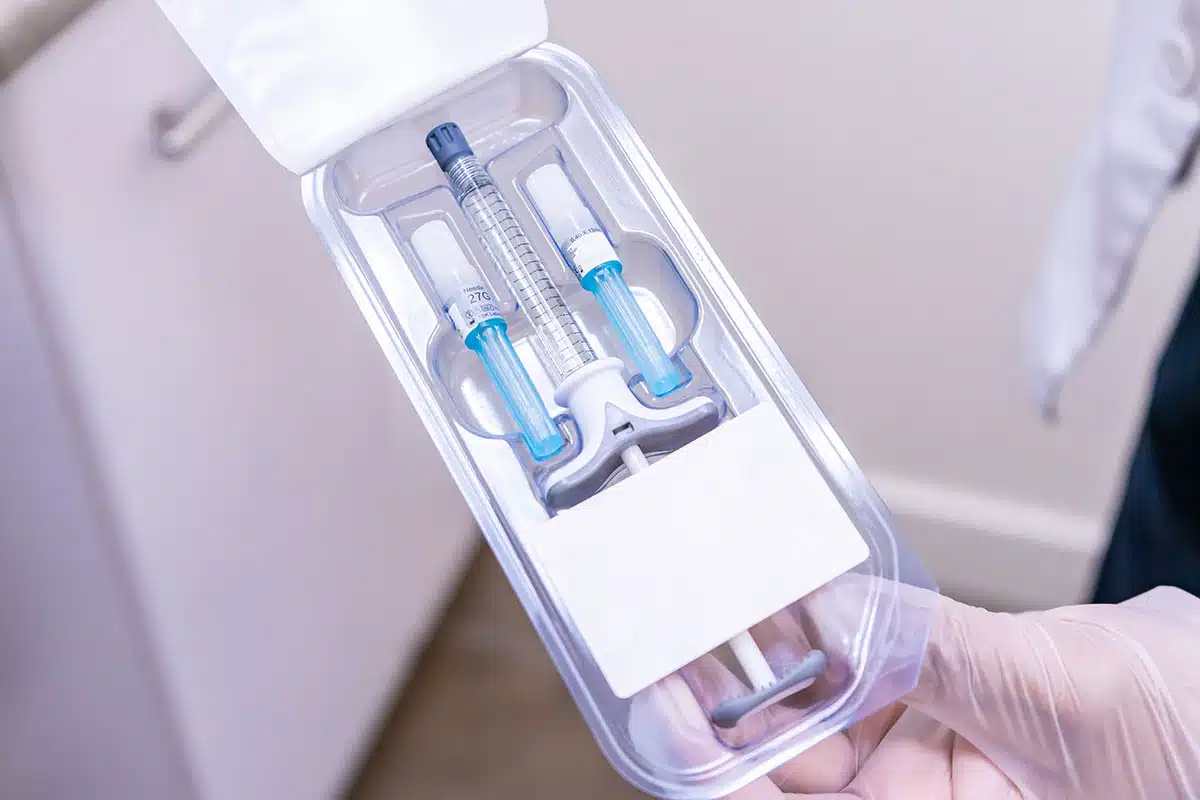2025 has brought manufacturers both challenges and opportunities in warehousing. The shortage of workers continues to be an issue. Companies are feeling pressure from customers and the general public to “green” their operations, including warehouse management and maintenance. The artificial intelligence boom has kicked into high gear, causing massive changes in supply chain management—and warehousing is no exception. As companies seek to tackle these and other pressing issues, there are five key trends emerging in warehouse operations.
Automation and Workforce Management
Companies are embracing technology to enhance workforce productivity while prioritizing worker safety and efficiency. Transportation & Logistics International puts it this way: “Technological advancements and rising consumer expectations are reshaping traditional operations. Automation is leading this shift, ushering in a new era of efficiency, sustainability, and adaptability.” Here are a couple of ways that manufacturers are managing their warehouse operations.
The artificial intelligence boom has kicked into high gear, causing massive changes in supply chain management—and warehousing is no exception.
Specialized Robots
One way automation benefits both workers and employers is by taking over tasks that require heavy lifting. This both prevents debilitating injuries and allows workers to focus on higher-value, less-risky activities. Adding robots may also reduce the number of workers needed.
There are a variety of manufacturing robots in use today. Here are the types most commonly found in warehouses:
Automated storage and retrieval systems are robotic systems that use cranes or shuttles to move goods between storage locations and picking stations, which minimizes the need for manual labor. They also enable real-time inventory tracking, allowing supply chain managers to make informed, data-based decisions about when to order products.
Collaborative robots differ from traditional industrial robots in that they are intentionally designed to physically interact with humans in a common workspace. They augment human capabilities with extra precision, strength, and data capability, allowing humans to do more.
Autonomous mobile robots are a real game-changer for moving goods across the warehouse. They utilize AI and sensors to gather and analyze a range of geophysical variables, enabling them to transport items without needing set paths or the tracks used by their predecessors, automated guided vehicles. These AI-enhanced mobile robots maneuver around obstacles and can modify their routes in real time to deftly navigate congested areas.
Finally, robotic picking systems are becoming more prevalent, especially in e-commerce and fulfillment centers. They use AI and advanced vision technology to identify, grab, and sort items with high precision. These automated picking systems are gradually replacing the cranes, conveyors, and other fixed mechanical systems that have long been used in warehouses.
Workers Are Scarce, But Can Be Found
Finding—and retaining—warehousing workers remains a serious problem throughout the industry. Demographic shifts are changing the labor force: The current workforce is aging and there aren’t enough younger people entering the field to compensate. At the same time, the rise in e-commerce has increased the demand for labor.
While automation is a part of the long-term solution, humans are still essential to a functioning warehouse operation. So forward-thinking companies are taking steps to broaden their labor pool. In addition to traditional hiring and training efforts, they’re increasing their outreach to include people with disabilities. These companies have discovered what numerous studies have shown: Employing workers with diverse abilities consistently increases both productivity and profit margins, while absenteeism and turnover decline.
Inventory Control and Visibility
Warehousing professionals need to know where their inventory is located and how much of a product they have on hand. In addition, customers expect to know where their shipment is at all times, and when it will arrive. Fortunately, the Internet of Things (IoT) is making inventory control and tracking easier and more accurate.
Combatting Inventory Shrinkage
Keeping tabs on inventory has always been a struggle. Items get misplaced or damaged, and are occasionally stolen. But now, real-time tracking technologies can reduce losses and allow warehouse managers to maintain precise control over inventory. These are a few of the game-changing technologies:
- RFID (radio-frequency identification) tags consist of a small chip and an antenna that transmits location information wirelessly. They can be placed on pallets and shipping containers to automatically track an asset’s location.
- Smart sensors are used to monitor and track inventory levels and the movement of goods, as well as monitor the temperature and humidity levels where goods are stored.
- Beacons use Bluetooth technology to transmit information to nearby smartphones and other devices so that warehouse workers can track the location of assets and inventory in real time.
- AI-enabled cameras capture and analyze a wide range of visual data, enabling them to detect motion and recognize objects and faces. These cameras not only enhance warehouse security, they also enable more accurate tracking of goods within the warehouse.
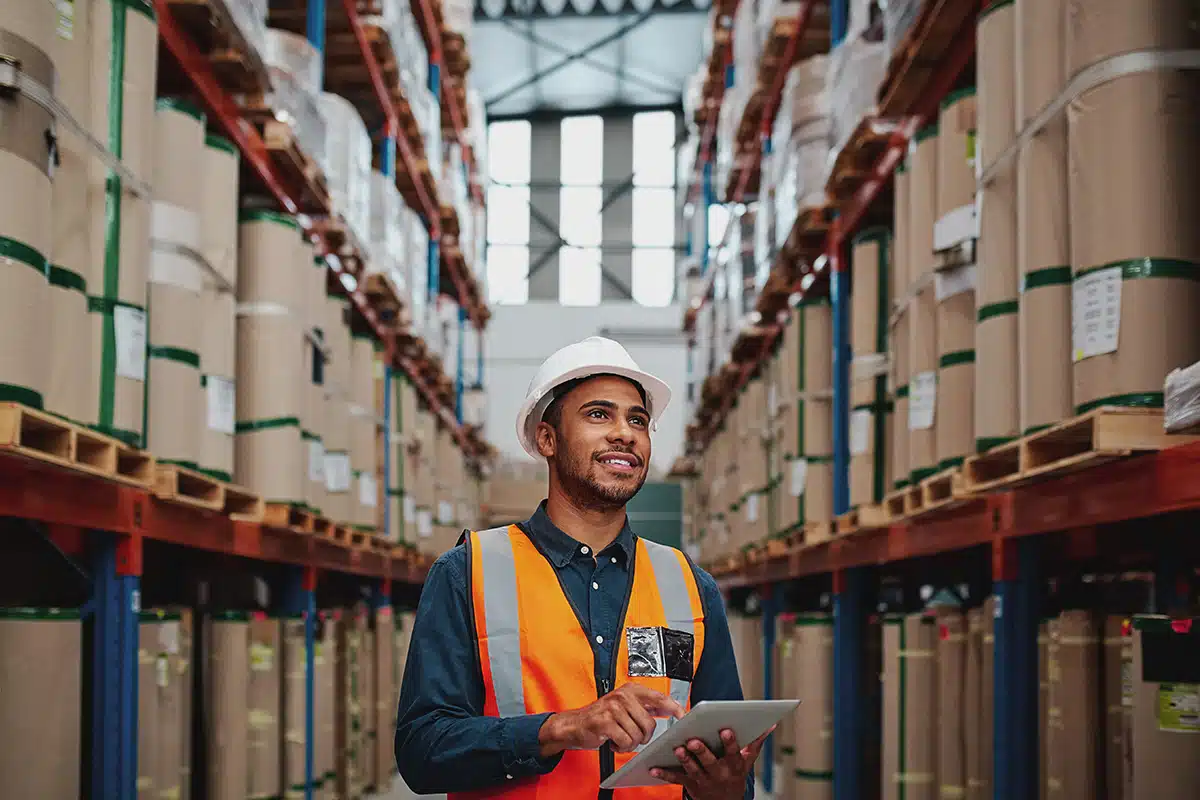
Used together, these tracking and control technologies make it possible for workers to quickly locate and transfer products. They also enable managers to monitor goods and determine if their movement is authorized or not, preventing theft and other forms of loss.
Advanced Monitoring of Shipping and Receiving
RFID and GPS technologies can also track items throughout their journey from producer to warehouse to end user. These devices offer real-time information about the item’s location, environmental conditions, and transit times. The data provided by these technologies enables workers to identify potential issues and take preventive measures when needed, leading to a better customer experience.
Blockchain Enables Supply Chain Transparency
As a digital ledger that records transactions across numerous computers, blockchain technology is most commonly associated with cryptocurrency. But the technology is increasingly important for supply chain management—including warehousing—because it allows manufacturers, retailers, and distributors to connect via a permanent digital record of every transaction throughout the supply chain. Blockchain technology also allows for “smart contracts”—computer programs that automatically execute actions based on predetermined rules. Smart contracts remove the need for paperwork and further automate inventory management.
Warehousing Sustainability
While the federal government is revisiting some environmental regulations, warehouse operations are nevertheless under pressure to implement sustainable practices in order to reduce pollution and increase the use of renewable energy. Manufacturers across multiple industries have made impressive strides toward those ends, and in many cases these changes make economic sense as well.
Eco-Friendly Warehousing Practices
There are many steps warehouse owners can take to improve sustainability. Among them are installing solar panels and better managing waste.
The large, flat roofs of modern warehouses are a perfect location for solar panels. Besides providing clean energy, an average warehouse can meet 176% of its annual electricity needs by fully building out its rooftop solar potential. Given the ever-rising cost of electricity, it’s an option worth considering on economic grounds as well.
Waste management, especially recycling, is another aspect of sustainability that receives a lot of attention. To optimize waste management efforts, companies clearly label recycling bins and place them in convenient locations. Depending on how ambitious a recycling program is, there can be several types of bins and distinct locations dedicated to different types of recyclable waste. Cardboard recycling, for example, requires large containers that can be easily moved up and down aisles, as well as balers and compactors.
Recycling is just one aspect of eco-friendly waste management. “Up-front” sustainability practices are just as important. For example, warehouses can use less packaging by making sure boxes are the right size for goods so that packing materials are minimized. In addition, some goods can be wrapped together or even placed directly into boxes. And some packaging materials can be reused numerous times, such as attached lid containers and pallets.
Circular Supply Chains
A growing trend in supply chain management is to create a closed-loop system where resources are continuously cycled back into production, minimizing waste and maximizing resource use. A key component of this is reverse logistics. And here warehousing plays an important role.
Reverse logistics involves collecting used products from customers and returning them to the supply chain through recycling, refurbishing, or repurposing. Warehouses can serve as hubs for collecting, sorting, and processing returned products. Adding these services can not only enhance a company’s reputation, but also create new revenue streams from the resale of refurbished goods and components.
Energy-Efficient Technologies
Energy costs continue to climb, providing warehouse owners with a compelling reason to explore ways to improve their buildings’ energy efficiency. The three areas where the most gains can be made quickly are lighting, powering equipment, and heating and cooling.
- LED lighting. According to the U.S. Department of Energy, LED lighting uses at least 75% less energy, and lasts up to 25 times longer than incandescent lighting. Because it produces less heat than other lighting systems, LED lighting can also reduce cooling costs. In addition, LED lighting integrates well with smart lighting systems, which offer energy-saving features like occupancy sensors that automatically activate or deactivate lights in response to motion.
- Energy-efficient warehouse equipment. As inventory is replaced, consider upgrading equipment to energy-efficient equipment like electric tugs, roller skids, and optimized aerial lifts. Newer models are generally better at performing tasks while saving money on energy bills.
- Smart HVAC technology. Smart sensors and thermostats can determine which areas of the warehouse need to be heated or cooled, and when to do so, and newer heaters, air conditioners, and heat-recovery ventilators are more effective and use far less energy than older models. Another measure to consider in colder weather is air destratification. Warm air naturally rises to the top of the warehouse, where it serves no purpose. By pushing that hot air down to the floor where it’s needed—through large fans, for example—the HVAC system becomes more efficient, and workers are more comfortable.
On-Demand Warehousing
The same technology that enables ride share and vacation rental apps is fueling another rapidly growing trend: on-demand warehousing. This new approach lets businesses rent warehouse space and fulfillment services only when they need them. On-demand warehousing offers numerous potential benefits, including:
- Faster shipping and fulfillment. For example, online retailers can ramp up for a busy holiday season by accessing additional space and logistical support for a set period of time.
- Reduced fixed-operating costs. While traditional warehouses usually require long-term leases and investments in equipment, maintenance, and labor, with on-demand warehousing, companies only pay for the space and services they need.
- Time to focus on core competencies. Warehousing management takes up time and resources. By outsourcing those functions during peak periods, companies can focus instead on higher-impact operations to help grow their bottom line.

Predictive Analytics and Maintenance
More and more warehousing operations are leveraging predictive analytics and maintenance to avoid expensive emergency repairs and extend equipment lifespans, achieving significant cost reductions. It also frees warehouse staff from performing important but repetitive and time-consuming work such as scheduling repairs and assigning technicians.
Predictive maintenance is made possible by sensors that monitor variables like temperature, vibration, and pressure levels, making it possible to assess the condition of crucial assets like forklift engines, conveyor belts, and automatic picking systems, and automatically triggering alerts when abnormal patterns are found.
The data gathered by warehouse sensors can be fed to a CMMS (computerized maintenance management system) or other software tool to determine when maintenance should be scheduled and automatically generate work orders. This allows maintenance to be performed based on need, not at fixed intervals, and provides maintenance teams with real-time information about the condition of a warehouse’s assets, enabling faster response times and better decision-making.
Like other warehousing trends, predictive maintenance is helping manufacturers streamline operations and reduce costs, and is part of the reason why today’s warehouses are so much more than just distant storage facilities. Modern warehousing is linked more closely than ever to the manufacturing process, providing valuable data that can help further streamline operations and provide insights into distribution and other issues.


